The Rosenberg Collection Part IV
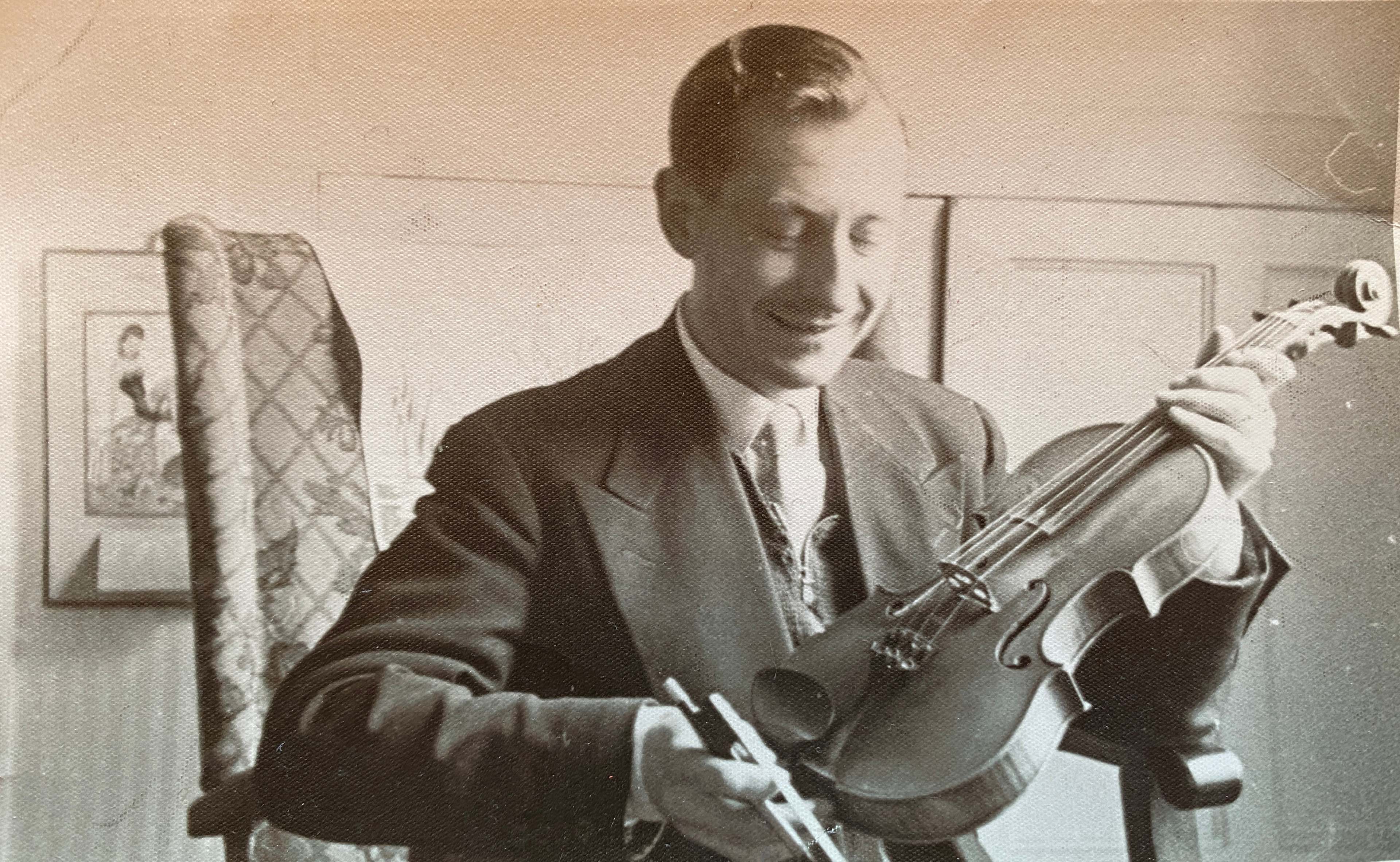
In our final article exploring the instruments of Norman Rosenberg, we discover some more diverse areas of the collection, offering particular insight into less well-documented but no less intriguing makers and schools. Bartolomeo Calvarola, one of only a handful of makers in Bergamo (plausibly counted amongst the Milanese school), is a slightly unusual maker, and a violin of 1845 provides a useful reference point. The widely spaced soundholes are typical, and although his scrolls can be quite eccentric in form, this example is more classically modelled.
Tomasso Balestrieri illustrates the small but distinguished Mantuan school, and one of the three violins in the collection attributed to him or his circle is evidently from an early period, with a more elegant appearance than might be expected. The Hills interestingly attribute this uncharacteristic touch to a contribution by Camillo Camilli, Balestrieri’s presumed teacher. The three instruments together provide a fascinatingly broad view of his work.
Florence is represented by an excellent and very characteristic Lorenzo and Tomaso Carcassi dated 1781, which shows the particularly long-lasting influence of Jacob Stainer on Florentine work. The Carcassis were perhaps not as precise in their work as their contemporary in the city, G.B. Gabrielli, and the slightly looser carving of the turns of the scroll is a point of distinction between the two workshops.

Two more unusual and beguiling violins in this extraordinary collection are attributed to Andrea Gisalberti and Antonio Mariani.
Two more unusual and beguiling violins in this extraordinary collection are attributed to Andrea Gisalberti and Antonio Mariani. Gisalberti of Parma is another rare maker, whose rustic and inconsistent style led to suggestions by early twentieth century writers that he may have been the teacher of Guarneri ‘del Gesù’. Of course, there is nothing in the idea at all, but it is still valuable to see the work of the only maker practicing in Parma, as far as is known, before the arrival there in 1758 of Giovanni Battista Guadagnini.
The violin attributed to Mariani of Pesaro in the mid-to-late seventeenth century is a treat. The almost comically crude scroll is quite arresting, and the generally crude appearance of Mariani’s labelled work, and occasional extravagant double-purfled instruments, provoked more unfounded speculation in the past, in this case about a connection to Gaspar da Salò or Maggini in Brescia. What is interesting here are the soundholes, which it has to be said are cut in the Brescian manner, with a bevel on the inner surface, but in form they relate very closely to sixteenth-century Venetian instruments by Linarol and Giovanni Maria. The Mariani family remain somehow an out-of-joint enigma in the story of Italian violin making.
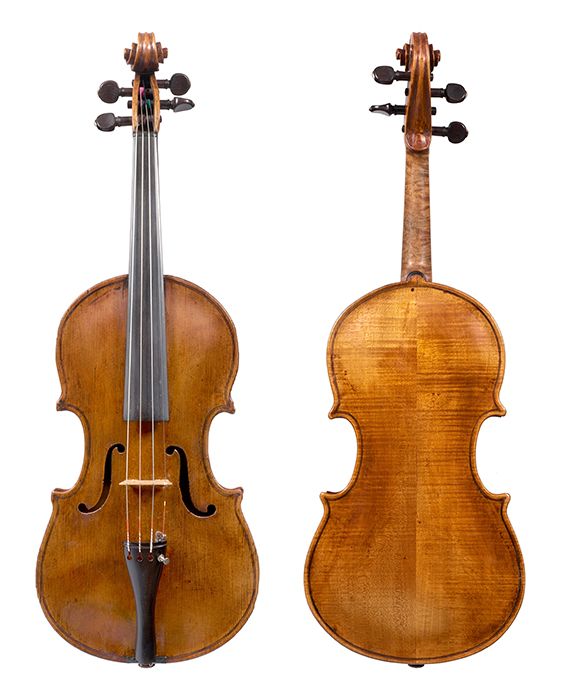
Finally, the presence of several remarkable English instruments is well worth attention, surely having particular meaning to the Liverpool-born Rosenberg. A very rare violin by Jacob Rayman, the earliest recorded maker in England, adds a great deal to what can be understood of his work. There are precious few intact survivors, and this violin has a replacement scroll possibly made by Jacob Fendt. Nevertheless, the strongly primitive appearance of the violin, with its outward pointing corners and Andrea Amati derived soundholes represents the first stirring of the English school. There is also a fine violin by Benjamin Banks, but perhaps the most attractive of this group of English work is an outstanding John Lott violin, a slightly unusual and very neatly executed copy of a Nicolò Amati. Lott is justly celebrated for his convincing imitations of Stradivari and del Gesù, but this relatively restrained example shows the subtlety of his skill as a copyist.
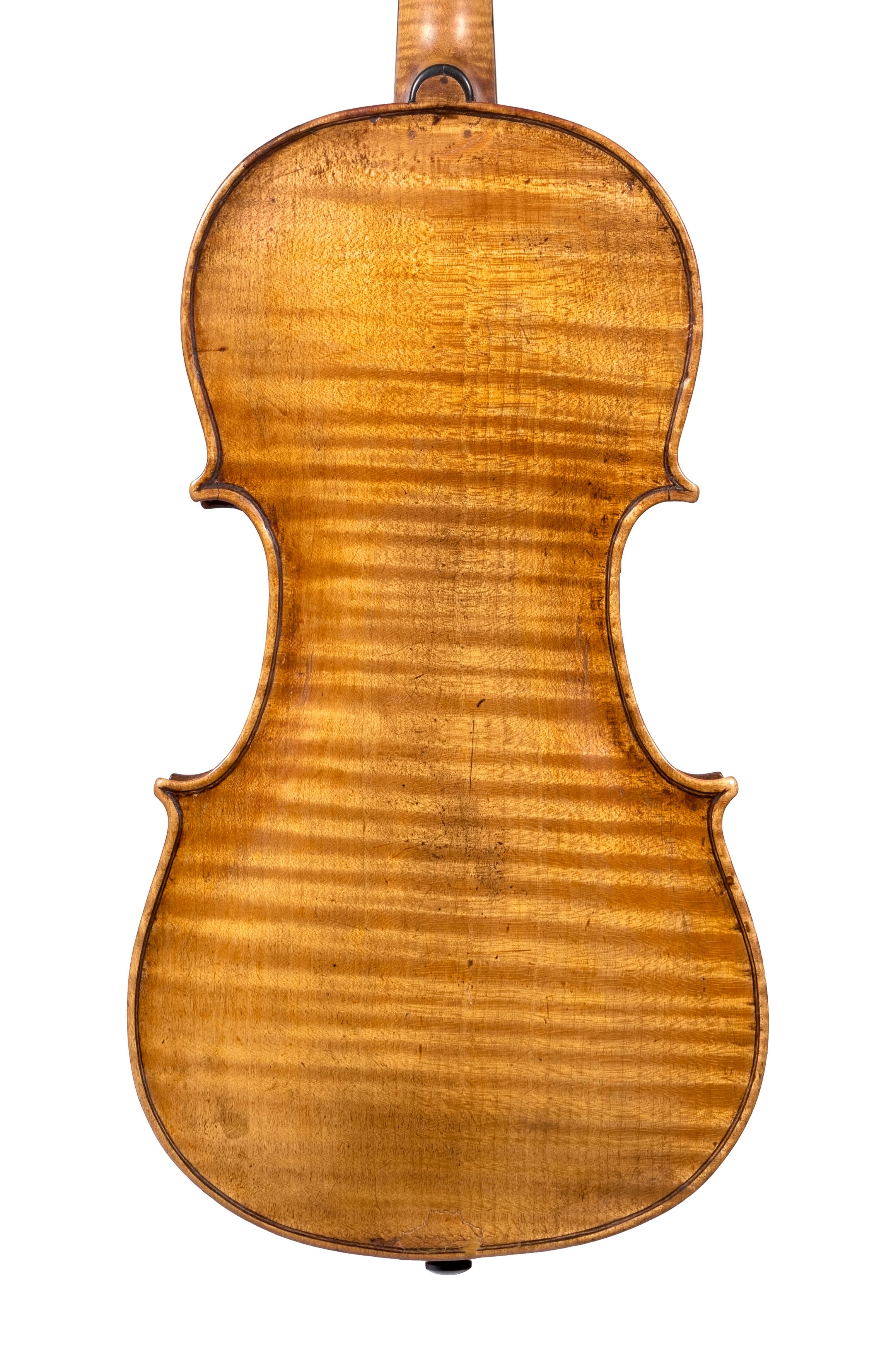

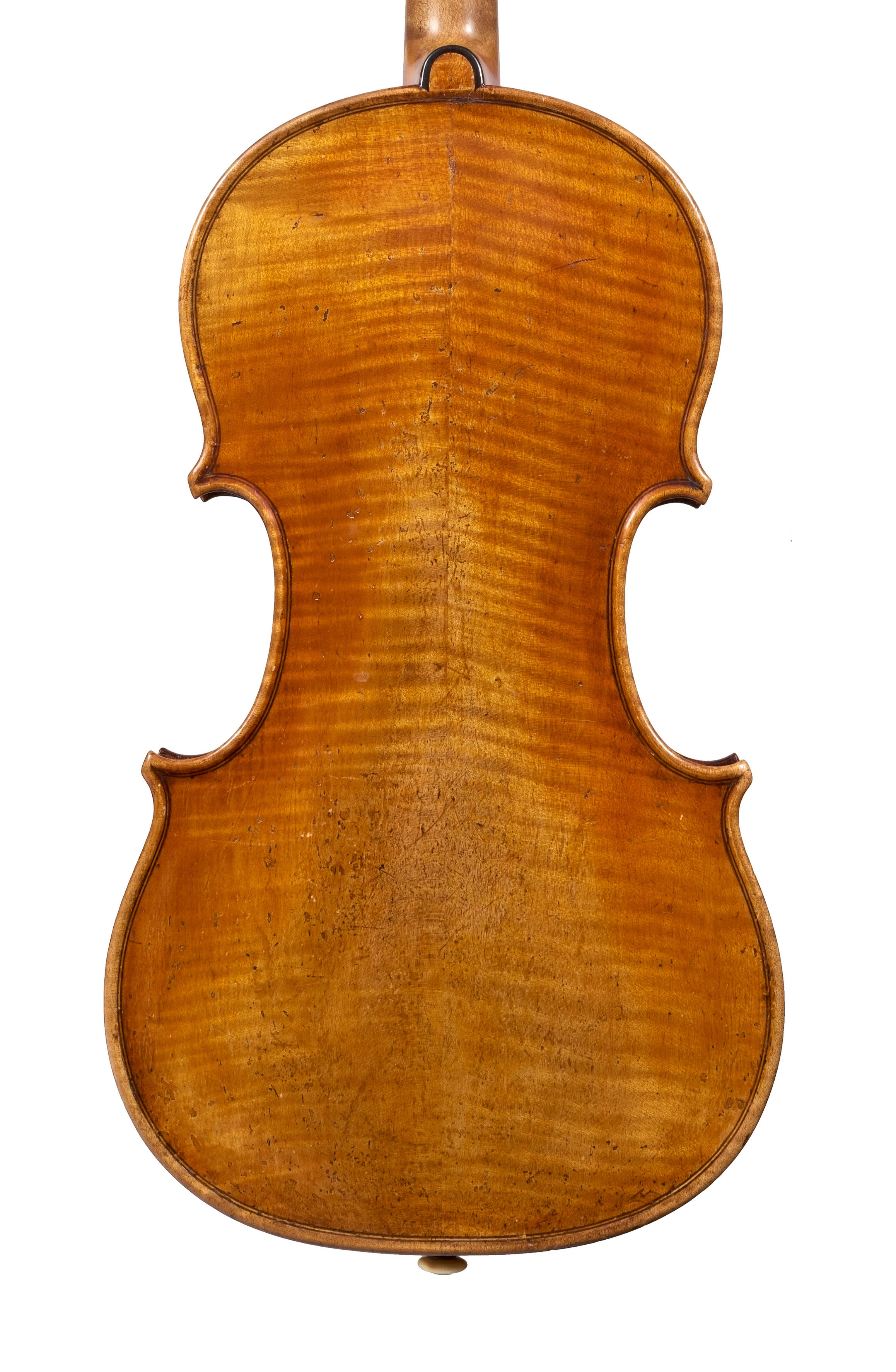
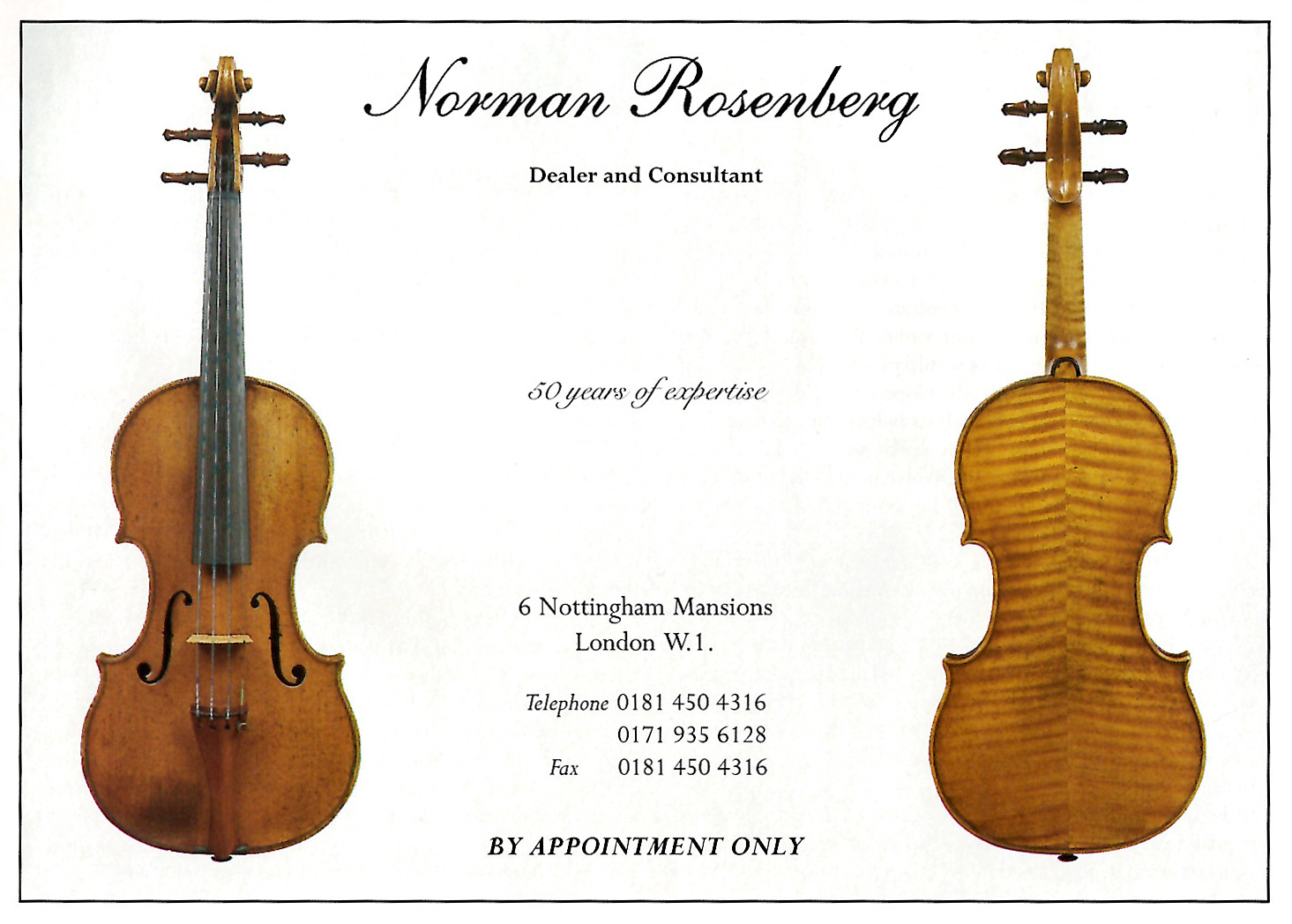
Norman Rosenberg’s expertise must have evolved, as it does for all connoisseurs, from the gradual acquisition and close observation of instruments by the master violin makers. His collection, assembled for trade, also brought him the knowledge he needed to discover more. To enjoy the extraordinary range of the violins that remained with him at his death is to share in and benefit from that lifetime’s study.
Recent Posts
Categories
- Feature Type
- Instrument Type
-
Maker
- Albani, Mathias (2)
- Amati, Andrea (8)
- Amati, Antonio & Girolamo (6)
- Amati, Girolamo II (6)
- Amati, Nicolò (5)
- Balestrieri, Tommaso (3)
- Banks, Benjamin (1)
- Bazin, Charles Nicolas (1)
- Bergonzi, Carlo (2)
- Bergonzi, Michele Angelo (2)
- Bernardel, Auguste Sébastien Philippe (2)
- Bisiach, Leandro (2)
- Bultitude, Arthur Richard (1)
- Camilli, Camillo (2)
- Cappa, Gioffredo (2)
- Carcassi, Lorenzo & Tomaso (1)
- Ceruti, Giovanni Battista (3)
- Chanot, George Adolph (1)
- Cuypers, Johannes Theodorus (1)
- Dalla Costa, Pietro Antonio (1)
- Deconet, Michele (1)
- Fendt, Bernard Simon II (1)
- Fendt, Bernhard Simon I (1)
- Gabrielli, Giovanni Battista (1)
- Gagliano, Alessandro (2)
- Gagliano, Ferdinando (1)
- Genova, Giovanni Battista (1)
- Gisalberti, Andrea (1)
- Goffriller, Francesco (1)
- Goffriller, Matteo (1)
- Grancino, Giovanni (4)
- Grancino, Giovanni Battista II (1)
- Guadagnini, Gaetano II (1)
- Guadagnini, Giovanni Battista (7)
- Guarneri 'filius Andreæ', Giuseppe (3)
- Guarneri del Gesù, Giuseppe (5)
- Guarneri of Mantua, Pietro Giovanni (2)
- Guarneri of Venice, Pietro (3)
- Guarneri, Andrea (3)
- Götz, Conrad (1)
- Kennedy, Thomas (1)
- Knopf, Carl Heinrich (1)
- Lott, John Frederick (1)
- Lupot, Nicolas (2)
- Mantegazza, Pietro Giovanni (2)
- Mariani, Antonio (1)
- Montagnana, Domenico (2)
- Panormo, Vincenzo Trusiano (1)
- Parker, Daniel (1)
- Peccatte, Dominique (1)
- Platner, Michele (1)
- Pressenda, Giovanni Francesco (1)
- Rayman, Jacob (1)
- Retford, William Charles (1)
- Rivolta, Giacomo (1)
- Rocca, Giuseppe Antonio (2)
- Rota, Giovanni (1)
- Rugeri, Francesco (3)
- Sartory, Eugène (1)
- Scarampella, Stefano (2)
- Schwartz, George Frédéric (1)
- Serafin, Santo (1)
- Sgarabotto, Gaetano (1)
- Sgarabotto, Pietro (1)
- Simon, Pierre (1)
- Stainer, Jacob (3)
- Storioni, Lorenzo (2)
- Stradivari, Antonio (14)
- Stradivari, Francesco (1)
- Stradivari, Omobono (1)
- Tadioli, Maurizio (1)
- Taylor, Michael (1)
- Tecchler, David (2)
- Testore, Carlo Giuseppe (1)
- Tourte, François Xavier (4)
- Tubbs, James (1)
- Voller Brothers (1)
- Vuillaume, Jean-Baptiste (10)
- Watson, William (1)
- da Salò Bertolotti, Gasparo (2)
- Author
- Charity
-
In the Press
- Antiques Trade Gazette (3)
- Archi-magazine.it (1)
- Art Daily (2)
- CNN Style (1)
- Classic FM (2)
- ITV (1)
- Ingles & Hayday (2)
- Liberation (1)
- Life Style Journal (1)
- London Evening Standard (1)
- Paul Fraser Collectibles (1)
- Rhinegold Publishing (1)
- Sotheby's (1)
- Strings Magazine (2)
- Tarisio (2)
- The Fine Art Post (1)
- The Strad (7)
- The Times (1)
